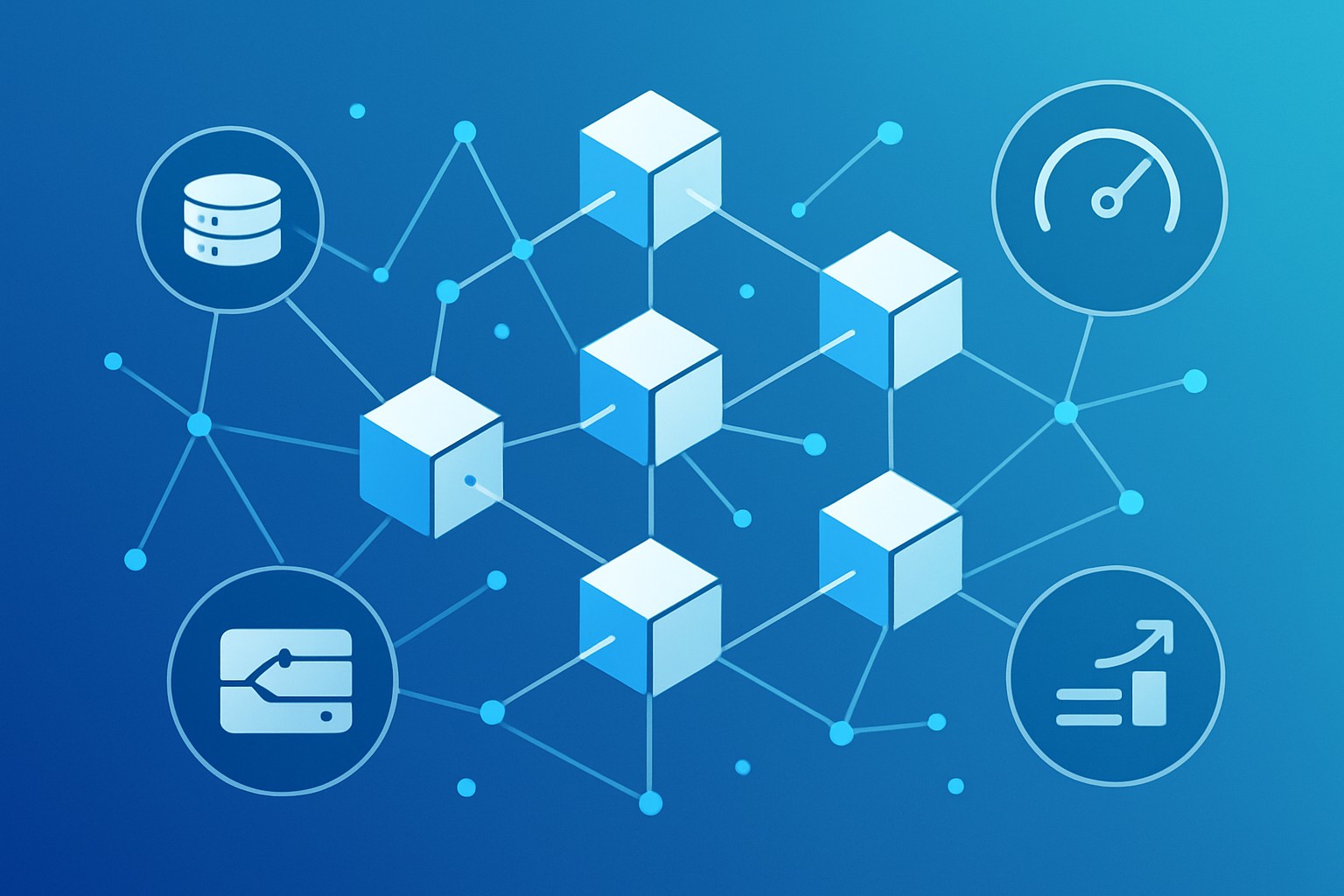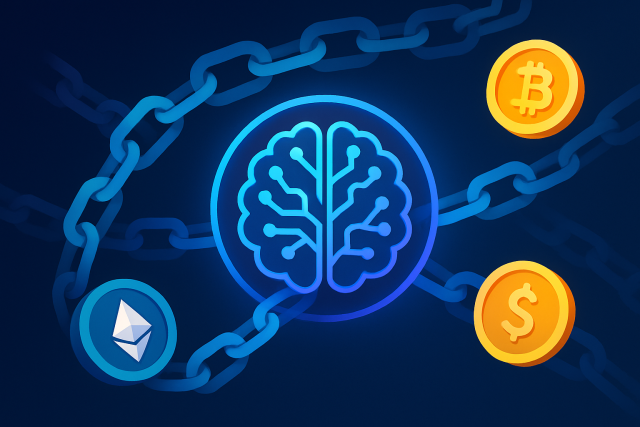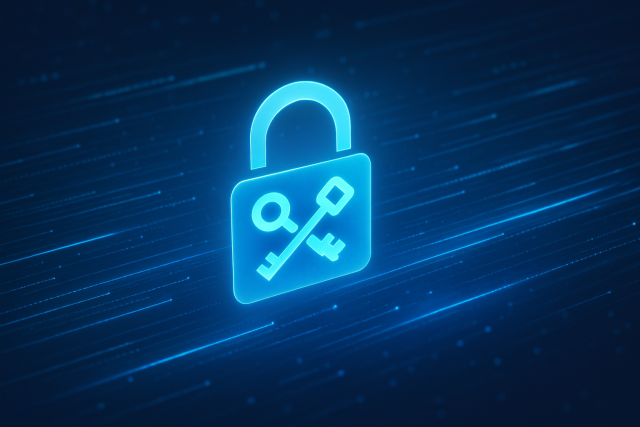Blockchain Scalability Issues Explained Simply


Blockchain technology has shifted our perspective on data security and decentralization, but as it grows, blockchain scalability issues quickly become a headache. Scaling means making blockchains faster and capable of handling many users simultaneously without breaking a sweat.
What Is Blockchain? A Brief Overview That'll Help You Get the Gist
It’s a good idea to first get a solid grasp on the basics of blockchain. Think of blockchain as a distributed ledger that stores data in blocks, which are linked together like beads on a string to form a chain. This clever setup allows a whole bunch of participants to securely verify and record transactions without having to put all their trust in a single central authority.
We will lean on some familiar analogies to help things click a bit better. Picture blockchain as a secure, shared Google Spreadsheet—one that plenty of individuals can peek at and update all at once—but with top-notch encryption and strict rules that keep any funny business from sneaking in.
What Does Scalability Really Mean in the Ever-Evolving World of Blockchain?
Scalability in blockchain basically means the network can juggle more and more transactions swiftly and without breaking a sweat as more users hop on.
- Transaction speed, which is how fast a transaction gets the green light and is confirmed.
- Network throughput or simply the total number of transactions the blockchain can process each second.
- Latency, the delay between submitting a transaction and seeing it confirmed.
- Cost per transaction, which affects how wallet-friendly the network feels.
- Node performance, influencing how swiftly participants validate and spread transactions across the network.
Blockchains often hit a wall, slowing down and getting pricier when they struggle to scale smoothly.
What Really Makes Scaling Blockchain Networks Such a Tough Nut to Crack
Blockchain networks place a big emphasis on security and decentralization which means they have to be extra cautious when verifying every single transaction and avoid any single point of failure like the plague.
Understanding Decentralization and Just How Consensus Comes Together
Decentralization means there is no single party calling all the shots over the blockchain. Instead many nodes scattered across the globe work together to keep it running. Transactions don’t go unnoticed because blockchains rely on consensus mechanisms like Proof of Work (PoW) or Proof of Stake (PoS). PoW, the method Bitcoin uses, is like a brain teaser marathon involving solving tough puzzles that consume a lot of time and energy and slow down transaction speeds. In contrast, PoS found in newer blockchains selects validators based on how much stake they have and often speeds things up while still requiring considerable teamwork among the nodes.
Block Size Limit and Block Time
Let's dive into the nuts and bolts of blockchain mechanics. These two factors, block size limit and block time, might sound like dry technical jargon, but they actually play a starring role in how blockchain transactions get wrapped up and recorded. Think of block size limit as the maximum number of passengers a bus can carry at once, and block time as how often that bus arrives at the station. Together, they shape the rhythm and capacity of the entire network.
Each block in a blockchain carries a limited chunk of transaction data called the block size. New blocks pop up at steady intervals known as block time. These limits act like gatekeepers to keep spam at bay and help the network stay rock solid.
| Blockchain | Average Block Size | Block Time (seconds) | Approximate Transactions Per Second (TPS) |
|---|---|---|---|
| Bitcoin | 1 MB | 600 (10 minutes) | Around 3 to 7, which keeps things nice and steady |
| Ethereum | About 100-120 KB | 13 to 15 seconds | Usually between 15 and 30, not too shabby for smart contracts |
| Litecoin | 1 MB | 150 (2.5 minutes) | Typically 20 to 56, giving Bitcoin a bit of a friendly nudge |
| Solana | Variable | 0.4 seconds | Over 2,000, blazing fast enough to make your head spin |
| Cardano | Variable | 20 seconds | Tops out over 250, balancing speed with a thoughtful approach |
Network Broadcast and Node Requirements Explained
Every single transaction has to be shared and confirmed by all the nodes in the network to actually reach consensus. That means each participant has to transmit and store a pretty hefty chunk of data. And as the network grows, these demands often end up slowing down the speed at which transactions get processed.
A Clear Look at Common Blockchain Scalability Issues and Challenges That Often Trip Us Up
- Transactions often lumber along at a snail’s pace which can test users’ patience and cause frustration.
- The steep fees make smaller payments more trouble than they’re worth.
- Network congestion creates bottlenecks when everyone tries to jump on at once.
- The limited transactions per second mean the network can only handle so many operations at a time before things back up.
- Energy consumption runs high especially with Proof of Work consensus sparking debates about how sustainable it is.
These challenges definitely leave their mark on how practical and user-friendly blockchain networks come across. Slow transaction times and hefty fees often push people to think twice before using cryptocurrencies on the regular. Network congestion doesn’t help either—it can throw a wrench in smart contract operations, dragging down decentralized apps and testing patience.
Real-Life Examples That Throw a Wrench in Scalability
When the Bitcoin and Ethereum blockchains get slammed with heavy activity during NFT launches or big market shake-ups, transactions often slow to a crawl. Fees shoot up and unconfirmed transactions start stacking like a messy inbox.
Think of blockchain congestion a bit like rush hour traffic when everyone and their dog seems to hit the road at once. The highways get jam-packed, trips drag on forever, and some people end up coughing up extra cash to zip through the faster lanes — much like blockchain users who pony up higher fees to get their transactions moving quicker when the network’s swamped.

How Developers Are Tackling the Ever-Persistent Puzzle of Blockchain Scalability
Developers have been steadily diving into ways to crank up blockchain scalability. Broadly speaking, these efforts fall into two camps. Layer 1 improvements tweak the very heart of blockchain protocols, while Layer 2 solutions cleverly move transactions off the main chain.
Layer 1 Scaling Solutions (On-Chain Improvements That Actually Move the Needle)
Layer 1 solutions zero in on beefing up the blockchain’s core protocol itself. This could involve increasing block sizes so each block can handle more transactions or reducing the time between blocks to speed up confirmations. It may also include shifting to more efficient consensus methods or rolling out sharding.
- Increasing the block size to squeeze more transactions into each block and give the network more breathing room.
- Shortening block time so new blocks pop up more frequently and keep things moving at a livelier pace.
- Switching consensus methods, like moving from Proof of Work to Proof of Stake, to make the process more efficient and less resource-hungry.
- Using sharding to split the blockchain into smaller chunks that handle transactions simultaneously, like handing out tasks to multiple hands instead of one.
Layer 2 Scaling Solutions (Techniques Working Their Magic Off-Chain)
Layer 2 solutions step in to ease the burden on the main blockchain by juggling transactions off-chain before settling up on the primary network. Techniques like payment channels, sidechains and rollups let a boatload of transactions flow through smoothly while keeping security in check.
- Payment channels like the Lightning Network make it possible to zip through countless micro-transactions off-chain and jot down a single summary on the blockchain when the dust settles.
- Sidechains act as their own blockchains alongside the main chain to handle transactions more efficiently.
- Rollups gather a bunch of transactions into one batch, run them off-chain, and then send back proofs to the main chain, keeping things tidy and streamlined.
The participants take care of their payments among themselves off the main ledger so the blockchain only records one combined transaction.
Trade-offs in Nailing Perfect Scalability Feels Like Chasing a Unicorn
The challenge of blockchain scalability is often summed up by the so-called 'Blockchain Trilemma,' a tricky balance of three vital aspects: decentralization, security and scalability.
- Decentralization means no single player controls the entire network.
- Security acts like a watchdog and keeps fraud and tampering at bay.
- Scalability lets the network handle many transactions quickly and without breaking a sweat.
Bumping up the block size to improve scalability might sound like a straightforward fix but often makes life harder for individuals with limited bandwidth or storage trying to run nodes. This can quietly chip away at decentralization. On the flip side, when security takes center stage, you usually have to accept slower transaction confirmation times, not exactly the speediest process. Because of these tricky trade-offs, blockchains tend to fine-tune their designs to suit specific use cases.
What’s on the Horizon
There are promising advancements on the horizon that could seriously boost blockchain scalability. Ethereum 2.0 is making the leap to Proof of Stake and adding sharding to ramp up capacity. Meanwhile, researchers aren’t sitting still. They are tinkering with new consensus protocols and striving to improve interoperability so different chains can play nicely together.
Scalability is clearly where the action is with steady breakthroughs keeping the momentum alive as we tackle blockchain scalability issues. Layer 2 solutions keep pushing forward. New consensus models are being road-tested and broader adoption is nudging improvements in user-friendly design.






